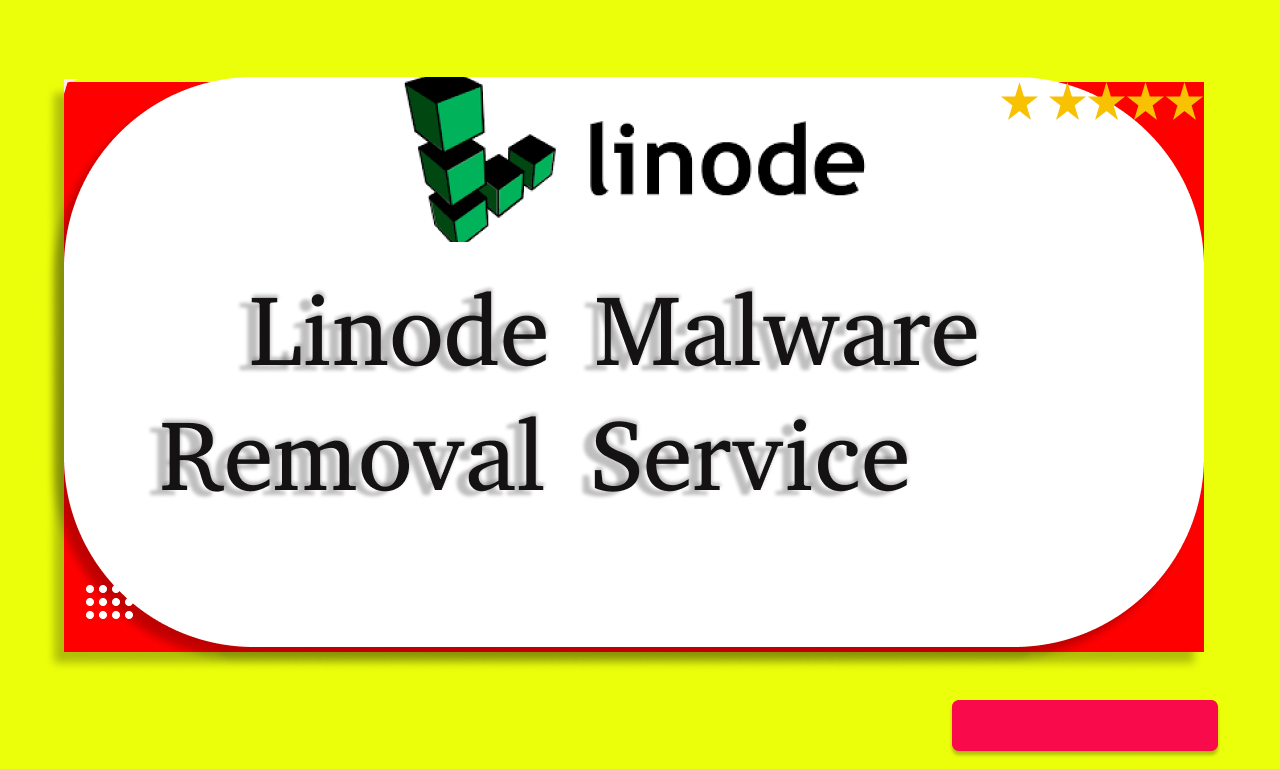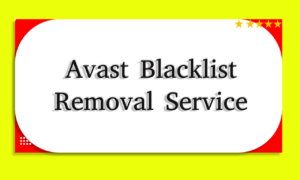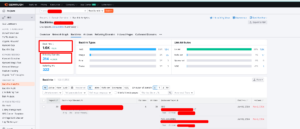Description
Ensure your website’s safety with WpPiP’s Linode Malware Removal Service. Our expert team quickly and effectively eliminates malware, protecting your Linode-hosted site. Trust WpPiP for comprehensive and reliable Linode malware removal solutions.
Linode Malware Removal and Website Security Monitoring
Is your Linode server acting strange? Slow loading times, unusual traffic spikes, or security warnings could all be signs of a malware infection. Don’t panic! WpPiP is here to help you reclaim control with our comprehensive Linode Malware Removal and Website Security Monitoring service.
Linode Malware Removal: We Kick Malware Out
- Expert Diagnosis & Removal: Our security ninjas meticulously scan your Linode server, identifying and eliminating all traces of malware. We prioritize safe and secure removal, minimizing disruption to your website’s operations.
- Guaranteed Clean Up: Worried about malware returning? We have your back! If malware reinfects your server within a specified timeframe (as outlined in our service agreement), we’ll re-clean it free of charge.
- 24/7 Support: Our team is always on call. Don’t hesitate to reach out if you have questions or concerns about the removal process.
Website Security Monitoring: Keeping You Protected
Linode malware removal is just the first step. WpPiP’s continuous website security monitoring ensures your Linode server stays healthy:
- Real-Time Threat Detection: We constantly scan for suspicious activity and potential malware infections, alerting you immediately if anything seems amiss.
- Vulnerability Assessment & Patching: We identify weaknesses in your server’s software and applications, allowing you to patch them promptly and eliminate vulnerabilities malware could exploit.
- Blacklist Monitoring: We keep an eye on website blacklists to ensure your Linode-hosted site isn’t flagged for malicious activity, protecting your reputation and search engine ranking.
- DDoS Protection (Optional): We offer additional protection against DDoS attacks, which can overwhelm your server and take your website offline.
The WpPiP Advantage:
- Local Expertise: Our Bangladesh-based team understands the regional cyber threat landscape.
- Proven Track Record: We have a history of successful Linode malware removal and ongoing security solutions.
- Focus on Long-Term Security: We go beyond just removing malware, providing proactive measures to prevent future attacks.
- Transparent Communication: We’ll keep you informed throughout the entire process, explaining threats and the steps we take to address them.
- Competitive Rates: We offer our services at competitive rates, ensuring you get the best value for your investment.
Some Linode website malware that we can remove:
1. Backdoors: Hidden code that grants unauthorized access to a website’s files and systems. 2. Code Injection: Malicious code inserted into legitimate website code, often to steal data or redirect traffic. 3. Cross-Site Scripting (XSS): Exploiting vulnerabilities to inject malicious scripts into webpages, affecting user interaction. 4. Cross-Site Request Forgery (CSRF): Tricking a user’s browser into performing unauthorized actions on a trusted website. 5. Defacement: Malicious modification of a website’s content, often with a message or propaganda. 6. Drive-by Downloads: Malicious code automatically downloads malware onto visitor’s devices when they access the website. 7. Exploit Kits: Pre-built tools that automate attacks by finding and exploiting website vulnerabilities. 8. Fileless Malware: Malware that doesn’t rely on traditional files, making it harder to detect. 9. Formjacking: Stealing user information submitted through website forms, like login credentials or credit card details. 10. Hidden Malware: Malicious code disguised as legitimate content, making it difficult to identify. 11. Injections (SQL, LDAP): Injecting malicious code into databases to manipulate or steal data. 12. Iframe Hijacking: Replacing website content with an iframe displaying malicious content. 13. Malvertising: Malicious advertisements that redirect users to phishing sites or download malware. 14. Mobile Malware: Malware specifically targeting mobile devices accessing websites. 15. Phishing: Creating fake login pages or websites to steal user credentials. 16. Ransomware: Blocking access to a website or its data and demanding payment for its release. 17. Remote Access Trojans (RATs): Tools allowing attackers to control infected devices remotely. 18. SEO Spam: Injecting spam keywords to manipulate search engine rankings for the website. 19. Session Hijacking: Stealing a user’s session ID to impersonate them and access their account. 20. Skimming: Stealing credit card information during online transactions. 21. Social Engineering Attacks: Manipulating users into taking actions that compromise website security. 22. Spam Bots: Automated programs that spam message boards or comment sections on a website. 23. Spyware: Software that gathers information about users’ activity without their consent. 24. Steganography: Hiding malware within seemingly harmless files like images or videos. 25. Trojan Horses: Programs that appear legitimate but contain hidden malicious functionalities. 26. URL Redirects: Malicious redirects take users to phishing sites or malware download pages. 27. Watering Hole Attacks: Targeting websites frequented by a specific group of users to infect their devices. 28. Web Bugs: Tiny images embedded in websites to track user activity without their knowledge. 29. Website Backups: Malware that backs up a website’s data for future attacks or data theft. 30. Worms: Self-replicating malware that spreads across websites within a network. 31. Web Shell Uploads: These scripts grant attackers remote access to your website. 32. Defacement Attacks: Hackers alter your website’s appearance with their content. 33. Cryptojacking Malware: Uses your website’s visitors’ processing power to mine cryptocurrency. 34. Backdoor Malware: This creates a hidden entry point for attackers to regain access to your website. 35. SQL Injection Attacks: Exploiting vulnerabilities to inject malicious code into your website’s database. 36. Brute-force Login Attempts: Automated attempts to guess your login credentials. 37. Watering Hole Attacks (Targeted): Targeting websites frequented by a specific user group with malware relevant to their interests or industry. 38. SEO Black Hat Techniques: Unethical methods to improve search engine rankings, often harming user experience. 39. Malicious SEO Redirects: Redirects to spammy or irrelevant content to manipulate search rankings. 4o. Traffic Bots: Malicious bots that generate fake website traffic to inflate metrics or manipulate analytics.
Linode Malware Removal Service Includes:
✅ Hacked website clean Backup files and database
✅Deep malware Scan of all Files and WordPress malware removal
✅Manually remove malware from Full Server or Cpanel
✅Hosting suspension removal
✅Fix redirecting issues
✅Blacklist removal (Google, Norton, McAfee, etc)
✅Google Japanese spam link removal
✅Plugins update
✅Fix website errors
✅SSL Installation
✅Any issue or bug Fixed
✅30 days support
Don’t let malware threats disrupt your business. Contact us today for a free consultation and get a guaranteed quote for your server’s Linode malware removal and website security monitoring. We’ll ensure your website remains a secure and reliable platform, giving you peace of mind.












Reviews
There are no reviews yet.